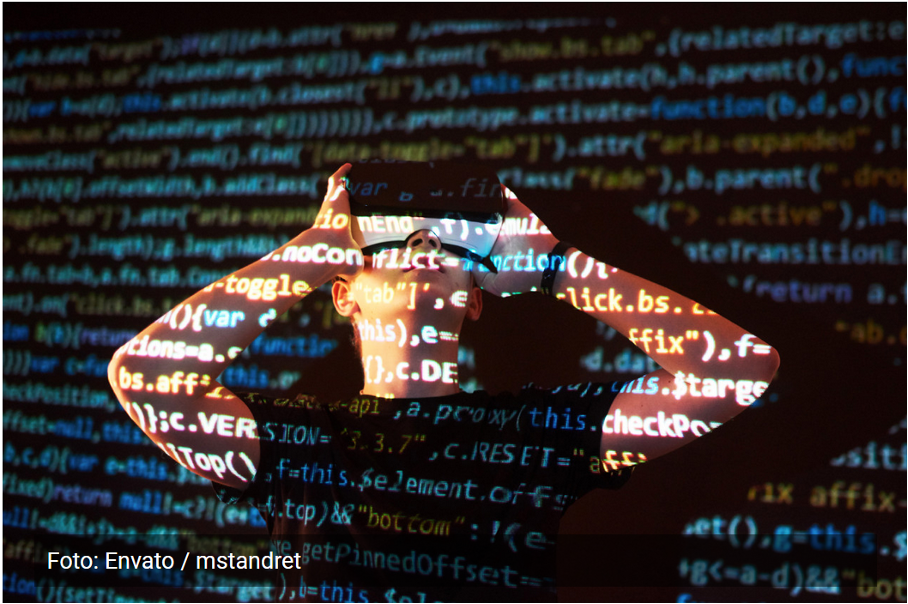Criminals are expected to exploit technical vulnerabilities of new technology intentionally in the Metaverse, aiming to steal money or data. How could a dedicated Metaverse police force solve crimes?
The location of criminals could be easily determined in the Metaverse.
Initially, a fundamental difference between the operation of the Internet and the Metaverse would be crucial. To establish a connection to the Internet, the network must assign a unique IP address to each user, which can be used to narrow down the geographic location of every Internet user. However, there are methods to obfuscate this information. In the Metaverse, such loopholes might become a thing of the past.
- Every avatar would need to be assigned a unique identifier by the 3D engine, making them easily traceable.
Avatars are primarily individual movable 3D objects. To manage these, the 3D engine must assign a unique identifier to each of them. Therefore, knowing the individual identifier of an avatar would allow anyone to determine its location with specialized tools.
- Even in the Metaverse, there could be patrolling police officers, and exciting pursuits may be possible.
If the police manage to identify a criminal’s avatar, their location in the Metaverse could be determined at any time. Blockchain technology could also be used to trace all of the criminal’s actions in the Metaverse.
Gelänge es der Polizei jedoch, den Avatar eines Kriminellen zu identifizieren, könnte sein Aufenthaltsort im Metaverse jederzeit ermittelt werden. Mithilfe der Blockchain-Technologie könnten auch sämtliche Aktionen des Kriminellen im Metaverse zurückverfolgt werden.
- Could Metaverse users obtain a new unique identifier?
Online games handle troublemakers in a straightforward manner: those who violate the rules of the game risk being banned. Game administrators identify the account used by the offending user and, once banned, the user must stay outside.
The common workaround is that when a new account is registered, in most cases, a new avatar is created to re-enter the game. The user must accept losing the banned avatar. Whether and how this strategy, popular among online troublemakers, could work in the Metaverse remains speculative.
- Could a dynamic avatar identifier be possible?
Having the individual identifier of an avatar would grant power over it. Monitoring every participant in the Metaverse would then be conceivable.
Implementing a dynamic avatar identifier could prevent this Big Brother scenario. It could function similarly to an IP address, which is reassigned to a user upon each login. To trace an avatar back, one would need to know who had a specific identifier at a given time. Access to private areas in the Metaverse might also be possible – whether investigators could have access in special cases remains to be seen.
What constitutes a crime in the Metaverse?
An even greater challenge lies in the foundation of law enforcement: legal regulations. Most of our laws are not designed for the digital world. Even the question of whether the theft of virtual assets is considered a theft from a legal perspective is still debated. Nonetheless, a significant ruling on the matter is now known.
- Virtual items may not exist physically, but they hold value.
In 2009, a Dutch court ruled that the theft of virtual items could fulfill the criteria for robbery. In this case, two teenagers threatened and assaulted a classmate with a knife to obtain an amulet and mask from the online game “Runescape.”
Since these items held value for the owner and could also be sold in the real world, the court considered the act as theft. The two teenagers were sentenced to 144 hours of community service.
- Could virtual offenses be punished like real-life offenses?
A highly publicized incident of virtual rape occurred on Meta’s “Horizon Worlds” platform last year. The 43-year-old psychologist, Nina Jane Patel, was harassed by some “Horizon Worlds” users while others watched. Whether Patel has taken legal action against Meta is currently unknown.
Experts like the Australian philosopher Jessica Wolfendale argue that offenses against our virtual bodies could become as significant as offenses against our physical bodies, depending on the extent to which we identify with our virtual existences.
The first known online offense was in text form
One of the earliest known cases of online offenses certainly supports Wolfendale’s theory. It occurred in 1993 within a Multi User Dungeon (MUD). MUDs were among the first online games and were entirely text-based. In MUDs, users could not only chat but also create their own role-playing games.
This included performing actions that were displayed as highlighted messages to other users. Examples include “User XY finds a key” or “User YZ opens the treasure chest and finds 1,000 gold coins inside.” The principle is that a user informs their fellow players about the action they are currently performing.
However, a user named “Mr. Bungle” introduced a program into the Multi User Dungeon, allowing these actions to be attributed to other users without their consent.
- The actions that “Mr. Bungle” introduced into the chatroom included violent and sexual acts.
- These actions could also involve multiple unsuspecting users.
- The manipulated messages from “Mr. Bungle” eventually revealed that a user in the Multi User Dungeon was sexually assaulting another with a knife.
According to media reports, some of the victims felt traumatized for months. It is still debated how online offenses should be appropriately dealt with.
Three Questions for Albert Quehenberger, Blockchain Forensic Expert and Cyber Threat Specialist
- What will be the biggest challenge for forensics in the Metaverse?
Albert Quehenberger: “I believe the Metaverse will generally pose a significant challenge for government entities. A legal framework must be established in collaboration with the operators of such platforms, and virtual contact points will be required for avatars to report crimes.
The specific challenge for forensics, in my opinion, lies in the incredibly vast amount of data that will be collected here and will need to be analyzed when necessary.
Transparency will be in high demand, but that alone won’t be enough. It is crucial to stay informed about developments in the crypto and cyberspace, as lifelong learning will be more critical than ever to keep up with advancements and solve crimes.
Interpol recently introduced the first Metaverse designed explicitly for law enforcement agencies worldwide and aims to establish uniform rules for the Metaverse in collaboration with companies like Microsoft and Meta.”
- Could every crime in the Metaverse be traced back, or are there potential loopholes?
Albert Quehenberger: “The boundaries between the physical and virtual worlds will blur. This is the significant challenge that security researchers warn about. If crimes occur in the Metaverse, there must be data, but the fundamental question is, if, for example, someone commits a virtual theft in the Metaverse, does what they are stealing have value? Is it something unique with a digital certificate, like an NFT, or something valuable like Bitcoin?
So if a theft occurs in the Metaverse, it could potentially be subject to criminal prosecution because you are stealing the possessions of others.
To investigate the data of the avatar who stole a digital asset and prove this theft using blockchain forensics, you would need to connect this data to convict someone of a crime.”
- What would be the most dangerous criminal act in the Metaverse?
Albert Quehenberger: “If criminals obtain blueprints of buildings in the Metaverse and then virtually recreate them to plan the next heist and practice for it in the virtual realm. Criminals could arrange to meet in private spaces and discuss the next crime without interference from law enforcement agencies.
The police would be locked out. This would be the dark side of the Metaverse, and just as the Darknet is a part of the Internet, there will likely be a Darkverse as well. The question is how to prepare for these new challenges from an official perspective.”

Our Expert: Albert Quehenberger
Albert Quehenberger has built a broad and comprehensive career in the fields of military intelligence, counterintelligence, cyber threats, and blockchain analytics. During his active service in the Austrian military, he conducted a project on blockchain and cryptocurrencies from a security perspective. In 2021, he became the first certified Austrian blockchain forensics expert in the United States and has since worked on over 400 cases. His most significant achievement in this field was the recovery of nearly EUR 800,000 in the form of cryptocurrencies stolen from a client. In 2023, he is embarking on a new venture to contribute to making Web3 safer.
[Link to the source article: https://www.weltderwunder.de/verbrechen-im-metaverse-sieht-so-die-zukunft-der-polizeiarbeit-aus/?fbclid=IwAR0zIhdN5BGMEjzWhZfK8ysPqmBe-l7iFxW4NZPTbQvFQvdLVuiIwIUXmcI]

